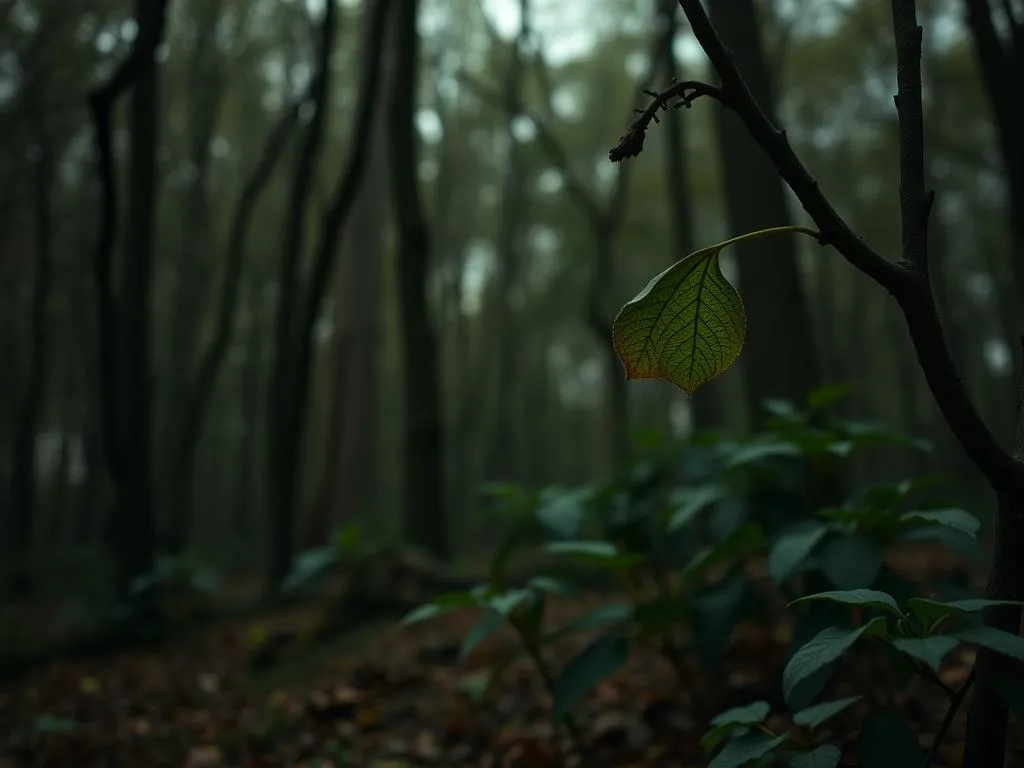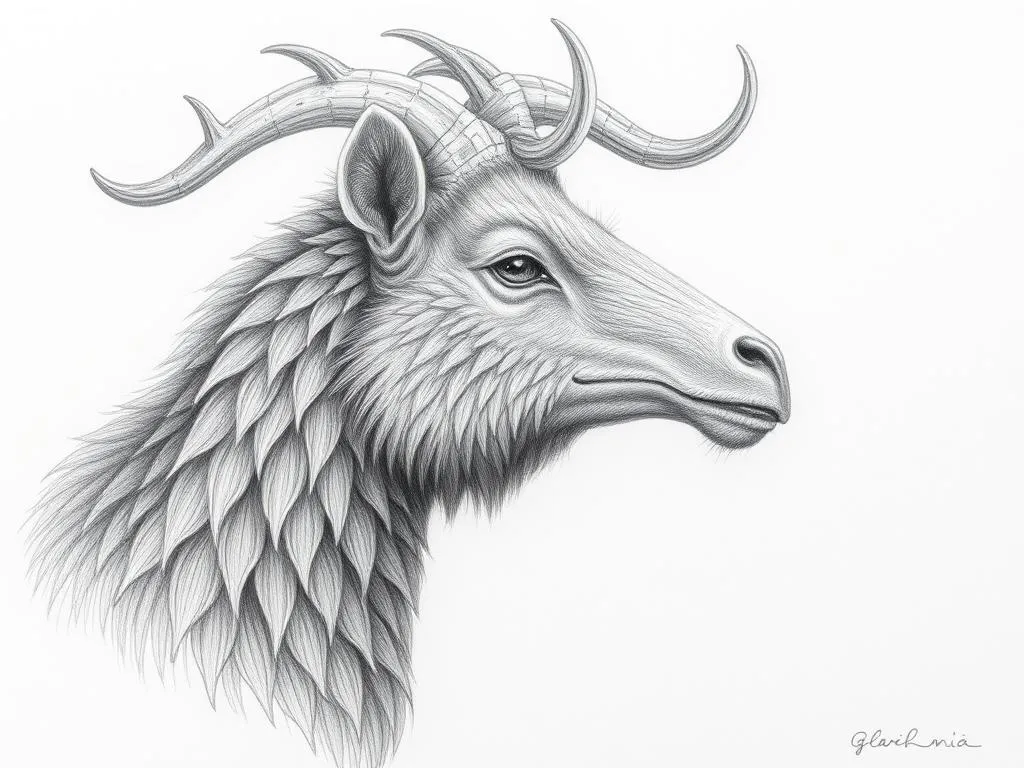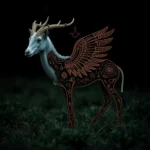The Symbolism of Dickinsonia: Unveiling the Ancient Enigma

Disclaimer: Some images on this website are AI-generated artworks and may not accurately represent real animals.
The exploration of Dickinsonia symbolism and meaning offers a fascinating glimpse into the profound lessons that ancient life forms can teach us. This enigmatic organism, which thrived during the Ediacaran period, holds within its fossilized remnants a wealth of insights about resilience, transformation, and adaptability. In this comprehensive blog post, we will delve into the unique characteristics of Dickinsonia, explore its symbolic meanings, and reflect on its relevance in our modern lives.
Understanding Dickinsonia
Overview of Dickinsonia
Dickinsonia is a genus of extinct organisms that lived approximately 558 million years ago, during the late Ediacaran period. This prehistoric entity is classified among the Ediacaran biota—a diverse group of multicellular organisms that predate the Cambrian explosion. Dickinsonia is particularly significant as it exhibits characteristics that blur the lines between animal and plant life, posing intriguing questions about the origins of multicellularity.
This organism’s soft-bodied nature and unique body plan make it a compelling subject of study. Fossils of Dickinsonia have been primarily found in what is now Australia, Russia, and Namibia, contributing to our understanding of early life on Earth. The organism’s distinctive oval shape and segmented appearance have led to various interpretations regarding its physiology, ecological role, and evolutionary significance.
Physical Traits
The physical characteristics of Dickinsonia are as fascinating as its symbolism. Its unique body plan exhibits a bilateral symmetry, which is uncommon among many Ediacaran organisms. Below is a summary of its key physical traits:
| Trait | Description |
|---|---|
| Shape | Oval or elongated with a segmented appearance |
| Size | Ranges from a few centimeters up to 1.4 meters |
| Surface Texture | Smooth with ridges or lobes in some specimens |
| Fossil Evidence | Impressions found in sedimentary rocks |
Fossils of Dickinsonia provide critical evidence of early life forms and help scientists understand the evolutionary pathways leading to modern animals. Their preservation offers a glimpse into the diversity and complexity of life in a time when the planet was vastly different.

Symbolism & Spiritual Meaning
Connection to Adaptability
One of the most profound aspects of Dickinsonia symbolism and meaning is its connection to adaptability. As an organism that thrived in a changing environment, Dickinsonia exemplifies the importance of flexibility and resilience. The Ediacaran period was marked by significant climatic shifts and geological changes, yet Dickinsonia managed to survive and flourish.
This adaptability serves as a powerful reminder for us today. In our ever-evolving world, we must learn to embrace change and adapt to new circumstances. The lessons from Dickinsonia encourage us to remain open-minded and resilient, highlighting the importance of embracing life’s uncertainties.
Embodiment of Transformation
The symbolism of Dickinsonia also embodies transformation. Its lifecycle reflects the broader theme of evolution, showcasing the gradual changes that life undergoes over millions of years. As a precursor to more complex life forms, Dickinsonia represents the potential for growth and development inherent in all living beings.
This symbolism resonates deeply, prompting us to consider our personal journeys. Just as Dickinsonia evolved, we too can embrace transformation in our lives. Whether through personal development, career shifts, or spiritual growth, the lessons from Dickinsonia inspire us to seek change and evolve in meaningful ways.
Representation of Resilience
Resilience is another key theme associated with Dickinsonia. This ancient organism managed to survive in harsh conditions, navigating a world that was often unstable and unpredictable. The ability to endure and thrive in such an environment speaks volumes about its strength.
In modern contexts, resilience is a crucial trait that individuals and communities must cultivate. The story of Dickinsonia encourages us to tap into our inner strength and face challenges head-on. By learning from the resilience of this ancient life form, we can find inspiration to overcome our own obstacles.
Dickinsonia in Dreams
Interpreting Dickinsonia Dreams
Dreams involving Dickinsonia can carry profound messages and insights. Common themes in these dreams may include adaptability, transformation, and resilience—the very qualities that define this ancient organism. Here are some interpretations of dreams featuring Dickinsonia:
| Dream Theme | Possible Interpretation |
|---|---|
| Adapting to Change | A need to embrace new circumstances in your life |
| Experiencing Growth | A journey of personal transformation and evolution |
| Overcoming Obstacles | Encouragement to face challenges with resilience |
Such dreams can serve as powerful reminders of the lessons Dickinsonia represents. They may inspire us to reflect on our current circumstances and encourage personal growth.
Symbol of Ancient Wisdom
In the realm of dreams, Dickinsonia may also symbolize a connection to ancient wisdom. This organism’s long history on our planet serves as a reminder of the knowledge and lessons that have been passed down through generations. Dreams featuring Dickinsonia might prompt us to tap into our ancestral knowledge or seek guidance from our past.
This connection to ancient wisdom can be particularly valuable in times of uncertainty. By recognizing the wisdom embedded in our history, we can navigate modern challenges with a sense of purpose and clarity.
Personal Transformation
Dreams involving Dickinsonia can also signal a time of personal transformation. As we confront the challenges of life, these dreams may reflect our subconscious journey toward growth and self-discovery. The symbolism of Dickinsonia encourages us to embrace change and view it as an opportunity for development.
Whether it’s a shift in perspective or a significant life change, dreams featuring this ancient organism remind us that transformation is an essential part of the human experience.
Modern Interpretations
Cultural References
In contemporary culture, Dickinsonia has influenced various forms of art, literature, and media. Artists and writers have drawn inspiration from its unique physical characteristics and its role in the evolutionary narrative. This ancient organism often appears as a symbol of life’s resilience and adaptability, resonating with modern themes of environmental consciousness and the interconnectedness of all life.
Through various artistic expressions, Dickinsonia serves as a reminder of our place within the broader tapestry of existence. It encourages us to appreciate our connection to the ancient past while considering our responsibilities to future generations.
Scientific Perspectives
Ongoing research surrounding Dickinsonia continues to shed light on its significance in the evolutionary timeline. Recent discoveries have uncovered new fossil evidence and refined our understanding of its biology and ecology. Scientists are exploring its potential relationships to modern organisms, offering insights into the origins of multicellularity and the evolution of complex life.
These scientific advancements not only enhance our understanding of Dickinsonia but also emphasize the importance of studying ancient life forms. The lessons derived from this research can inform current discussions about biodiversity, conservation, and the challenges facing our planet.
Environmental Symbol
Dickinsonia also carries significant relevance in today’s discussions about environmental sustainability and biodiversity. As we face unprecedented challenges related to climate change and habitat loss, the story of this ancient organism serves as a poignant reminder of the interconnectedness of life.
By studying organisms like Dickinsonia, we can gain insights into the resilience of ecosystems and the importance of preserving biodiversity. This ancient life form highlights the necessity of protecting our planet’s delicate balance, urging us to respect and value the rich tapestry of life that has evolved over millions of years.
Key Takeaways
- Adaptability: Dickinsonia teaches us the importance of being flexible and open to change in our lives.
- Transformation: The organism embodies the potential for growth and evolution, encouraging personal development.
- Resilience: Dickinsonia’s survival in harsh conditions inspires us to cultivate inner strength and face challenges head-on.
- Dream Symbolism: In dreams, Dickinsonia may reflect personal growth, adaptability, and a connection to ancient wisdom.
- Cultural Impact: The organism influences modern art and literature, emphasizing its relevance in contemporary discussions about life and the environment.
- Scientific Significance: Ongoing research into Dickinsonia enhances our understanding of evolutionary biology and the history of life on Earth.
Conclusion
In summary, the exploration of Dickinsonia symbolism and meaning reveals a rich tapestry of insights into resilience, transformation, and adaptability. This ancient organism not only informs our understanding of early life on Earth but also serves as a source of inspiration for navigating the complexities of modern existence.
As we reflect on Dickinsonia’s significance, we are reminded of the enduring lessons it offers. By embracing the qualities of adaptability, transformation, and resilience exemplified by this prehistoric life form, we can find inspiration in our own journeys and cultivate a deeper connection to the ancient wisdom that informs our modern lives.







